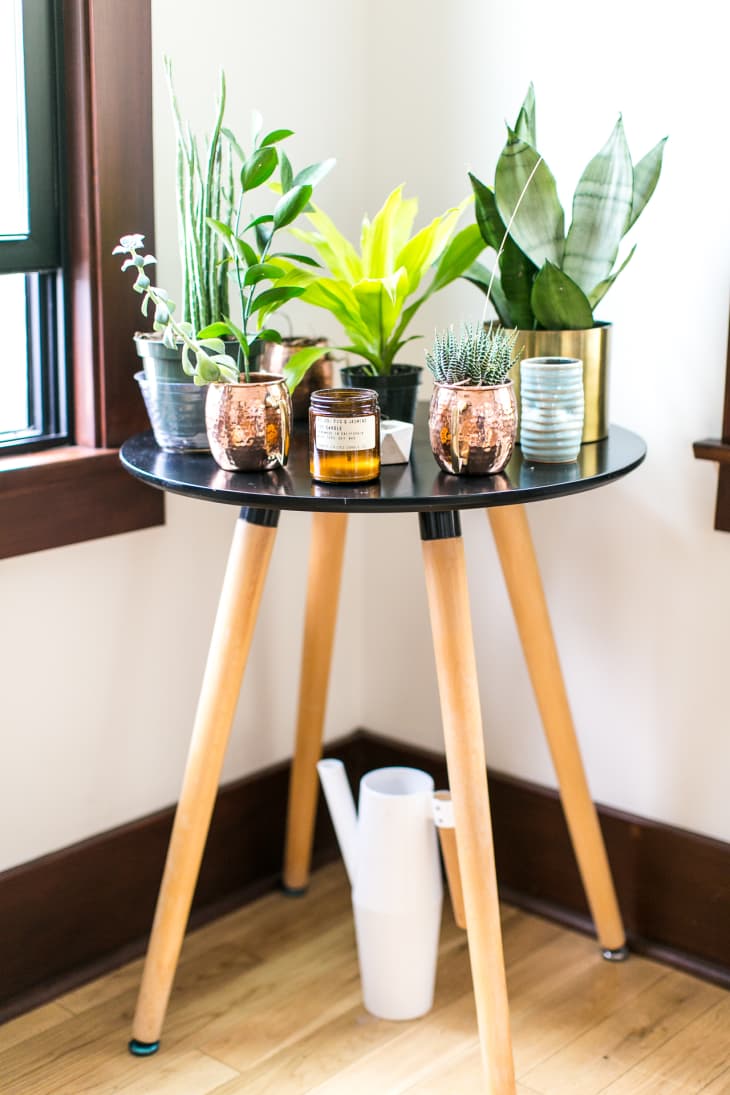
Is it just me, or was 2017 the year everyone became obsessed with plants? I can barely remember to drink enough water myself, let alone keep houseplants alive, but I so admire the plant lady lifestyle. I want to fill my apartment with ferns and flowers and feel a little extra life in my home, but without a naturally green thumb, I need a little help, and I can’t be alone in that, right?

If you too are an aspiring plant parent, here’s a book that might help (it’s certainly got me inspired to try cultivating my own apartment garden!). Happy Houseplants: 30 Lovely Varieties to Brighten Up your Home by Angela Staehling is an adorably illustrated book that’s small but full of tips, starting with gardening and plant basics (the tools and materials you need, from pruning tools and different types of containers to a DIY potting mix recipe) and leading up to specific care instructions for 30 different types of plants.
Basically, you don’t need a green thumb, because this book will take care of it for you—you just need to read it and follow directions.
There are 30 different types of plants covered in the book, including several types of cacti, moss, air plants, ferns, flowers, succulents, and even a chili pepper plant. Each plant in the book has its own illustration with information about the plant and how it grows, along with step-by-step care instructions and tips.
Speaking of snake plants, here’s an excerpt from the book on caring for them which gives you a sense that the book is easy to understand and easy to follow:
The snake plant has stiff pointed leaves that are commonly banded with gold, silver, or gray edges. Commonly referred to as mother-in-law’s tongue, the snake plant’s upright leaves can grow to between 3 and 4 feet / 91 and 122 cm tall. The snake plant is one of the easiest plants to grow indoors, as it adapts to a variety of growing conditions. An added bonus is that it improves indoor air quality by absorbing toxins, such as nitrogen oxide and formaldehyde.
Step-by-Step Care
Soil: Snake plants prefer a loose all-purpose potting mix. Try adding coarse sand to your soil to help with drainage.
Light: Place your snake plant in a bright location with indirect light.
Water: Water the snake plant thoroughly and let the soil dry out between waterings. Snake plants prefer drier soil. Water less during winter.
Fertilizer: Feed monthly during spring and summer with a cactus fertilizer.
Tip: Use a clay or terra-cotta pot for your snake plant. These porous containers help draw water out of the soil and away from the roots. Snake plants don’t like to sit in soggy soil.
Hải Yến
Gió bạn với cây tự buổi nào ,
Gió về cây lại ngất ngư chao .
Gió đi cây sẽ im lìm đứng,
Như kẻ lỡ làng dạ khát khao .



